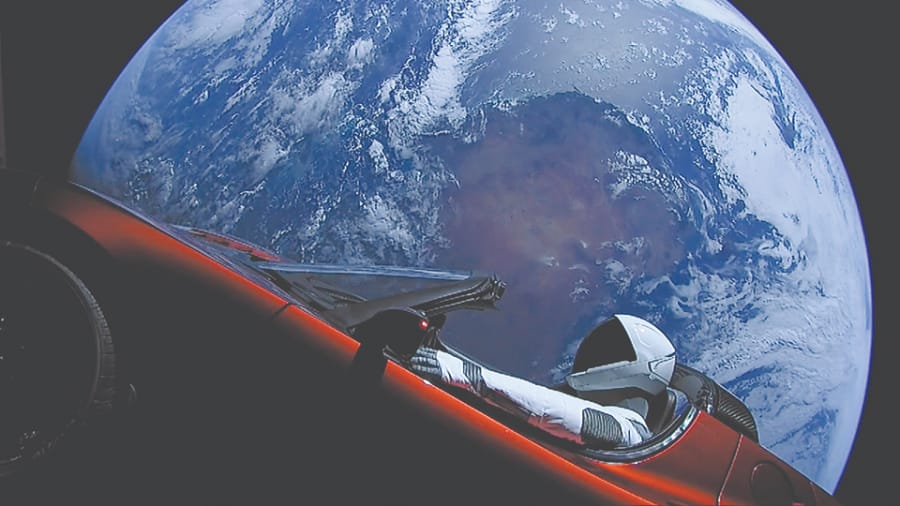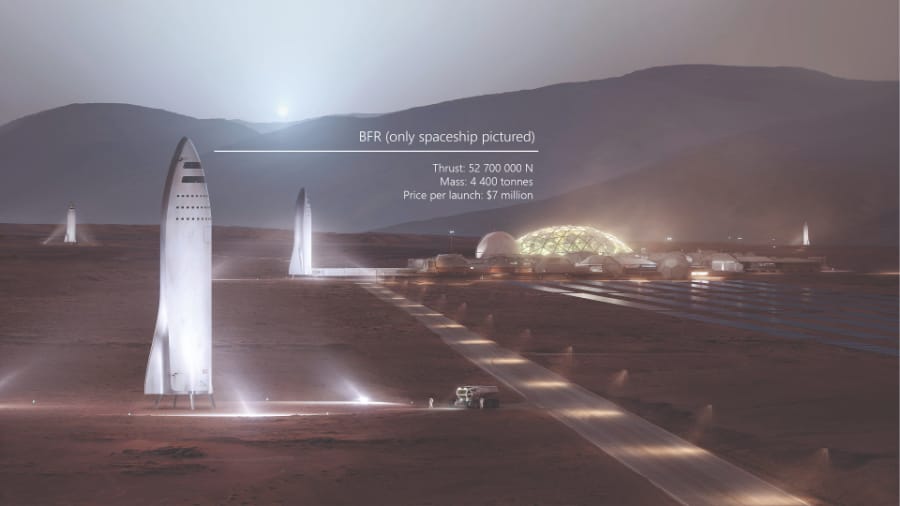Falcon Heavy: looking past a brilliant publicity stunt
It might seem silly, but there are lessons to learn from Falcon Heavy

Finally. There’s late, and then there’s this rocket. Conceived in 2004, Falcon Heavy was in the works before I could ride a bike or reliably spell the word “rocket”. Sure, expecting a timely release from Elon Musk would be simply ludicrous, but this is a bit much even by future-leader-of-Mars’ standards. Why did the world’s most ambitious aerospace venture find it so hard to do little more than tape three Falcon 9 rockets to each other?
In a presentation in 2011, Elon Musk announced the Falcon Heavy would fly in 2013. But come around 2013 and the world’s most powerful rocket seemingly became stuck being “just six months away”, staying that way for nearly five years. As SpaceX engineers quickly found out, duct tape just wasn’t going to do the job. But gluing two boosters to a Falcon 9 core wasn’t the only challenge SpaceX faced. Each time it seemed like we’d finally see the Falcon Heavy fly, the Falcon 9 team would bring about a newer, more powerful version of the rocket. Back to the drawing board it was for the Falcon Heavy then, as the concept based around the now-deprecated Falcon 9 version fell apart like a Jenga tower.
Rather critically, though, SpaceX had little reason to rush with the Heavy. Throughout its development, it became increasingly unclear why the world needed the rocket at all. Its lifting power, while impressive, wasn’t taking anyone to Mars anytime soon. In fact, by 2017 the cheaper Falcon 9 had nearly matched the 25,000kg payload capacity Falcon Heavy had originally been designed for. By then, however, Falcon Heavy was far enough in its development to stick around, and with upgraded engines from its little brother had the power to become a super-heavy launcher – a rocket capable of launching more than 50,000kg to low earth orbit.
“It became increasingly unclear why the world needed Falcon Heavy at all”
As it rolled out to Launch Complex 39A at Cape Canaveral, the same one Apollo 11 took off from in 1969, the Falcon Heavy could carry up to 63,800kg to low earth orbit – the mass of 23 elephants or a single small space station. Yet in what must be the maddest display of opulence in human history, Elon Musk didn’t choose to launch a space station or scientific experiments but rather his very own midnight cherry Tesla Roadster. With a figurine of a man in the driver’s seat. With a little model of a Tesla Roadster on the dashboard and its very own tiny passenger in its tiny seat. All while the convertible’s stereo played David Bowie’s ‘Space Oddity’ in the one medium through which sound can’t travel. Which was a great idea. No, really, I’m being serious. True to their original purpose as ballistic missiles, rockets go kaboom pretty damn often, especially the first time they’re launched. In fact, the only rocket to fire this many engines at once was the Soviet N1 which wasn’t particularly successful (to put it mildly). In four launches, it spectacularly failed four times, creating the most powerful non-nuclear explosion ever registered in the process.

The odds were against the Falcon taking flight, so whatever was going up that day had to be okay with going down equally as quickly should things go south. Luckily, a Tesla Roadster was as affordable as rocket payloads get, much cheaper than a satellite or just about anything else that might be useful. Expressed in FiveSixEight’s curly fries, blowing up a Tesla Roadster would have cost Musk only about 50,000 portions of this overrated snack compared to the over 300 million plates a proper satellite is worth. Incredible as it may sound, launching a convertible into space appears to have been a wise and economical decision.
Crispy metaphors aside, the Falcon Heavy test flight was the perfect publicity stunt not only for SpaceX, but space travel as a whole. The footage of the entire launch has seen nearly 20 million views, far more than any other space-related video on YouTube. Even the most sceptical and ambivalent observers admit that seeing a car soaring through space is just awe-inspiring. Rather disappointingly, this launch appears to have saturated the market for sports cars in space, so the Falcon Heavy will now need to find a different purpose. Despite countless doubts surrounding its actual usefulness, the heavy lifter has proven itself to be pretty capable. In theory, we should see it compete with the likes of the Delta IV Heavy or the Space Launch System, but in practice it dominates both ULA’s and NASA’s (respectively) entries. The Delta IV Heavy costs $435 million per launch while the SLS is projected to swallow half a billion of taxpayers’ money every time it lifts off. No matter what crunchy treat you convert that to, it’s just bloody gluttony. What’s worse yet, the SLS isn’t even a real rocket, but rather just a series of very, very, very, very expensive blueprints. An astronomical $18 billion worth of blueprints to be exact. With a launch cost of just $150 million ($90 million when reused) and double the Delta IV Heavy’s payload, does the Falcon Heavy render the above rockets obsolete? Not quite. Especially the SLS is here to stay, its only purpose being to utilize spare parts from the Space Shuttle in an attempt to convince America that a fragile, overpriced spaceplane wasn’t a terrible idea.
“Blowing up a Tesla would be worth about 50,000 portions of curly fries”
Impressive as it may be, the Falcon Heavy won’t shake up the launch market nearly as much as the Falcon 9 did. Instead, it gives SpaceX a much needed confidence boost after a mysterious satellite failure last month cast a shadow of doubt over its Hawthorne headquarters. After the launch of the ZUMA satellite, a piece of tech so classified it’s unclear who even purchased the launch, speculation arose that the $1 billion, taxpayer-funded satellite had been lost to a failure. No evidence pointed to SpaceX being at fault, but a billion dollars is a billion dollars (or 1.7 billion Cadbury Cream Eggs if you will) and even after COO Gwynne Shotwell and Gen. John Thompson claimed that Falcon 9 performed nominally and the public was enraged. Due to the secretive nature of the mission, the fault could lie with payload adapter manufacturer Northrop Grumman or even no one at all – ZUMA could be just fully operational, and we’d be none the wiser.
Nevertheless, after the down that was the ZUMA mission, confidence was restored with the Falcon Heavy and it is the press conference after that very test flight that featured a very important quote from Musk. Commenting on the successful launch, the clearly intoxicated (though that could just be his normal self) supervillain stated that he is now confident “that BFR is really quite workable”.

The BFR, to clarify, is the real deal. After the powerful yet limited stepping stone that is the Falcon Heavy, it is the BFR that aspires to take mankind to Mars. Its acronym stands for none other than the “Big Fucking Rocket” (a reference to the “Big Fucking Gun”, a weapon from the 90s videogame Doom), or as SpaceX’s boring legal team chose to call it – the “Big Falcon Rocket”. The BFR is expected to first fly next year, with a cargo flight to Mars expected as early as 2022. Of course, these dates are to be taken with a Big Fucking Pile of Salt, as it is commonly known that Musk’s estimates are given in Martian years (the conversion rate to Earth years is approximately 1.88:1). When it does finally take flight, the BFR will be a fully reusable monster of a ship with 150 tons of payload capacity, thirty-one engines, and a cabin comparable to that of an Airbus A380.
With the Falcon Heavy test flight, we’ve witnessed without a doubt the most impressive feat of engineering in the past few decades. The fact that a hypersonic flying machine split into three and then landed (well, two for three on the landings due to an issue on one of the boosters) with fantastic precision while taking an electric car and a sci-fi spacesuit to the asteroid belt is hard to take in. Best of all, if this is just a preface to the commercial space age, we’re in for one hell of a ride.








